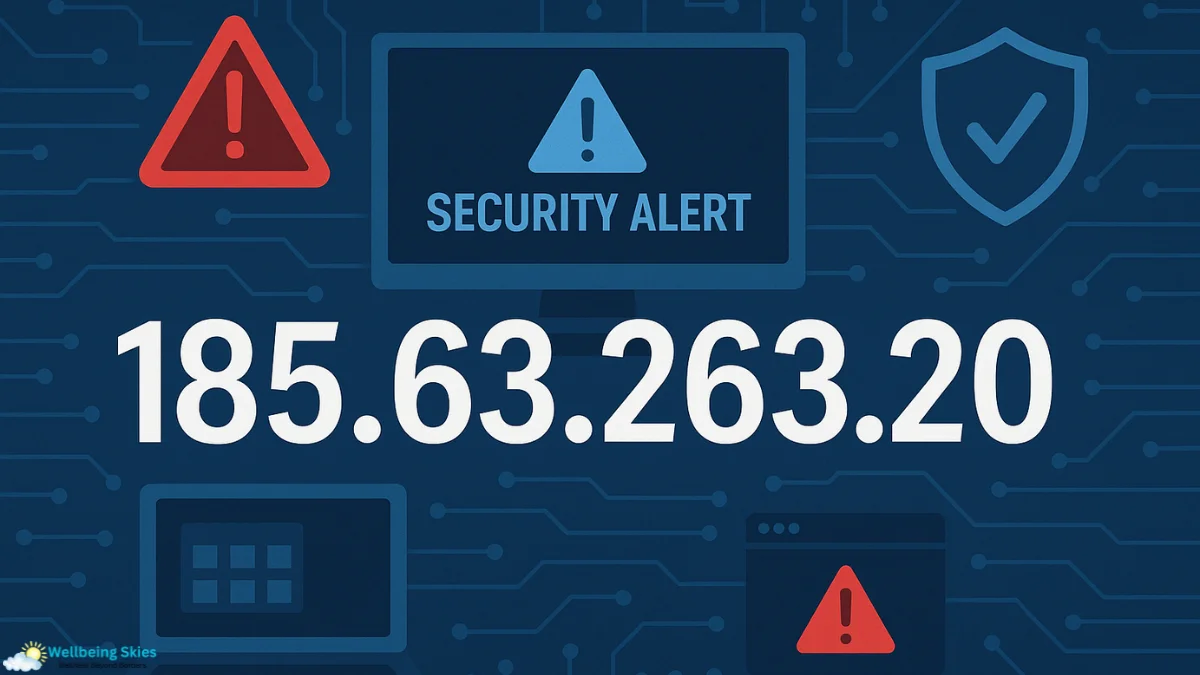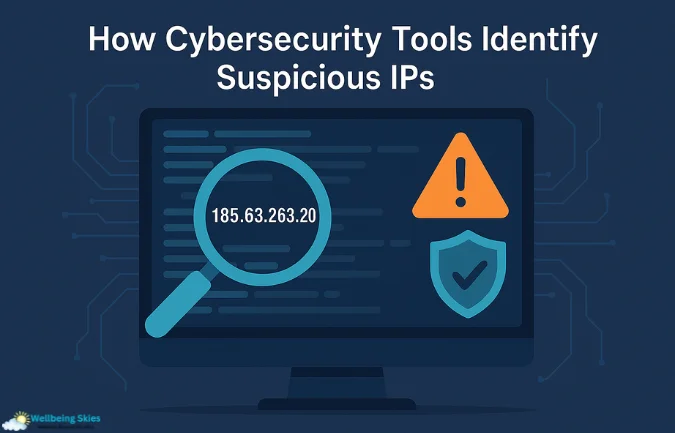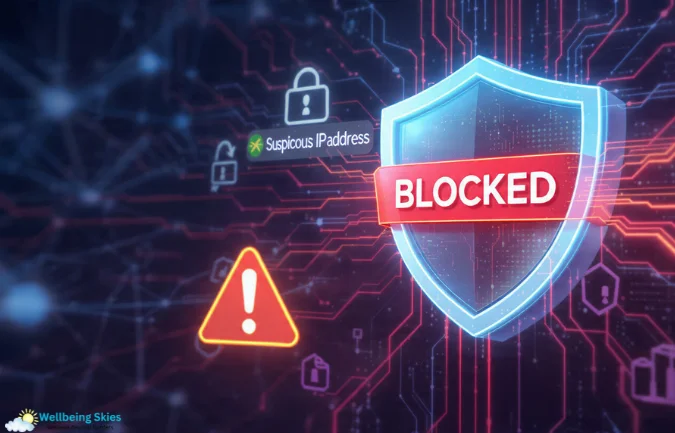In today’s connected world, even a single IP address like 185.63.263.20 can raise questions when it appears in server logs or security reports. Although it may look like a random set of numbers, cybersecurity tools frequently flag it because of unusual or suspicious online activity. Seeing this IP in your logs doesn’t automatically mean you’re being targeted, but it does signal that you should stay alert and understand what’s going on behind the scenes.
This article breaks down why 185.63.263.20 appears in alerts, what types of threats it is linked to, and how you can protect your systems from similar risks. The goal is to provide a clear, human-friendly explanation—so you know exactly what to do next.
What Is 185.63.263.20 and Why Does It Get Flagged?
Every device connected to the internet uses an IP address to send and receive data. It functions like a digital home address. However, certain IPs—such as 185.63.263.20—end up on security radars because they appear in traffic patterns associated with risky activity.
Cybersecurity tools flag this IP because it has been observed in actions like:
-
unusual or automated network requests
-
spam-like communication
-
attempts to reach system areas that require authorization
-
bot-generated scanning of websites
-
activity from infected or compromised servers
When these patterns repeat across multiple networks, firewalls and intrusion detection systems automatically categorize the IP as suspicious.
It Doesn’t Always Mean Direct Danger
It’s important to note that 185.63.263.20 being flagged does not automatically mean someone is trying to attack your device. Often, servers around the world detect the same behavior at the same time, meaning the IP may simply be part of automated bot activity circulating across the internet.
How Cybersecurity Tools Identify Suspicious IPs Like 185.63.263.20
Security systems work by comparing network activity to known threat behavior. When an IP behaves similarly to malicious sources, it gets flagged.
Common Indicators of Risk
Security logs may warn you about 185.63.263.20 due to:
-
High-volume automated requests
Bots often send a large number of server requests in a short time. -
Unusual access attempts
These include login trials, scanning open ports, or probing for weak spots. -
Spam-like traffic
Servers compromised by malware may send large batches of unauthorized messages. -
Repeated pings or scans
Many threat actors scan thousands of websites daily to look for vulnerabilities.
Even if the original source isn’t intentionally malicious, compromised devices can unknowingly generate this activity.
Table: Common Behaviors Linked to 185.63.263.20
| Observed Behavior | What It Means | Risk Level | Recommended Action |
|---|---|---|---|
| Automated scanning | Bot scans for vulnerabilities | Medium | Monitor and block if necessary |
| Failed login attempts | Checking for weak passwords | High | Strengthen credentials and enable 2FA |
| Large volumes of requests | Possible spam or bot traffic | Medium | Rate-limit connections |
| Suspicious network probes | Attempting to identify open ports | High | Use firewalls and intrusion detection |
| Appearing in multiple security logs | Unusual repeated activity | Medium–High | Investigate, update system security |
Why 185.63.263.20 May Show Up in Your Server Logs
If you run a website, a hosting server, or even a firewall-protected home network, you may see 185.63.263.20 appear in logs for several reasons:
1. Automated Bots
Bots continuously scan websites for outdated plugins, misconfigurations, or weak login pages.
2. Malware-Infected Machines
Computers infected by malware sometimes become part of larger botnets. They may unknowingly send traffic to random IPs—yours included.
3. Opportunistic Scanning
Cybercriminals often use automated tools to scan millions of IPs, hoping to find vulnerabilities.
4. Suspicious Scripts or Probing Tools
Security researchers, hobbyists, and malicious actors occasionally run scripts to test system responses.
In most cases, the appearance of 185.63.263.20 is a sign of automated background noise on the internet—not a personal attack.
Is 185.63.263.20 Dangerous?
The IP address itself cannot harm you. The question is how it has been used. Based on various open-source intelligence (OSINT) reports and user feedback across cybersecurity forums, 185.63.263.20 has been linked to patterns resembling unauthorized scanning or spam-like behavior.
However, context matters:
-
It may be part of a botnet.
-
It may be a compromised server under someone else’s control.
-
It may be misconfigured or running outdated software.
What Experts Say
According to publicly available threat intelligence databases like AbuseIPDB and Spamhaus (credible OSINT sources), IPs that demonstrate these patterns are often temporarily or permanently listed to protect global networks. These listings help cybersecurity tools block risky connections automatically.
References: AbuseIPDB, Spamhaus DROP List, SANS ISC Suspicious IP Reports
How to Protect Yourself When You See IPs Like 185.63.263.20
Even if you’re not directly targeted, it’s smart to strengthen your cybersecurity posture. Most of these steps take only minutes but add long-term protection.
1. Keep All Software Updated
Attackers often exploit outdated systems. Ensure your:
-
operating system
-
browser
-
antivirus
-
server software
are all up to date.
2. Enable a Firewall
Firewalls act as the first line of defense. They block unwanted traffic, including traffic from 185.63.263.20, before it reaches your system.
3. Use Strong Passwords
Weak passwords are one of the easiest ways for automated scripts to gain access.
Use long, unique passwords and avoid reusing them.
4. Enable Two-Factor Authentication (2FA)
Even if someone guesses or steals a password, 2FA blocks unauthorized access.
5. Avoid Unknown Links and Downloads
Phishing attacks are still one of the most common methods for malware infections.
6. Consider Using a VPN
A VPN hides your real IP, making it much harder for automated scanners or bots to target you directly.
7. Monitor Your Logs
If you run a website or server, occasional log checks help identify:
-
Repeated failed login attempts
-
Sudden traffic spikes
-
Suspicious patterns tied to IPs like 185.63.263.20
The sooner you detect unusual activity, the faster you can mitigate risks.
Is Blocking 185.63.263.20 the Right Move?
Blocking an IP such as 185.63.263.20 is usually safe because legitimate users rarely rely on it. Most organizations block suspicious IPs as a precaution, especially when:
-
Logs show repeated, unexplained requests
-
Firewalls detect scanning activity
-
bot-like patterns are observed
Even if blocking isn’t mandatory, it adds an extra layer of safety with no downside.
In Summary: Remain Vigilant, Stay Secure
The appearance of 185.63.263.20 in your server logs or firewall alerts doesn’t automatically mean someone is targeting you. Instead, it’s a reminder that the internet is filled with automated activity—some harmless, some suspicious.
By keeping your system updated, using strong passwords, enabling firewalls, and staying alert, you reduce the risk of falling victim to automated threats. Knowledge is your best defense, and understanding how IP addresses behave helps you stay one step ahead.
If you want to stay safer online, review your security settings today and consider tightening your defenses. Small steps make a significant difference in long-term protection.
FAQs
1. Why does 185.63.263.20 appear in my firewall logs?
Because it has been involved in automated or suspicious traffic patterns, such as scanning or probing network ports.
2. Is 185.63.263.20 part of a known botnet?
It has appeared in OSINT reports linked to bot-like scanning activity, though the exact source may vary.
3. Should I block 185.63.263.20?
Yes, blocking it is generally safe and can prevent unnecessary or risky traffic.
4. Does seeing this IP mean my system is under attack?
Not necessarily. It often means your security tools are doing their job by filtering suspicious traffic.
5. Can this IP harm my device directly?
An IP address alone cannot harm you, but the activity linked to it can signal automated attempts to find vulnerabilities.
For More Reading: xuzhanikanoz3.2.5.0: Powerful Tool for Digital Tasks
I’m Salman Khayam, founder and editor of this blog, with 10 years of experience in Travel, Lifestyle, and Culture. I share expert tips on Destinations, Hotels, Food, Fashion, Health, and more to help you explore and elevate your lifestyle.




